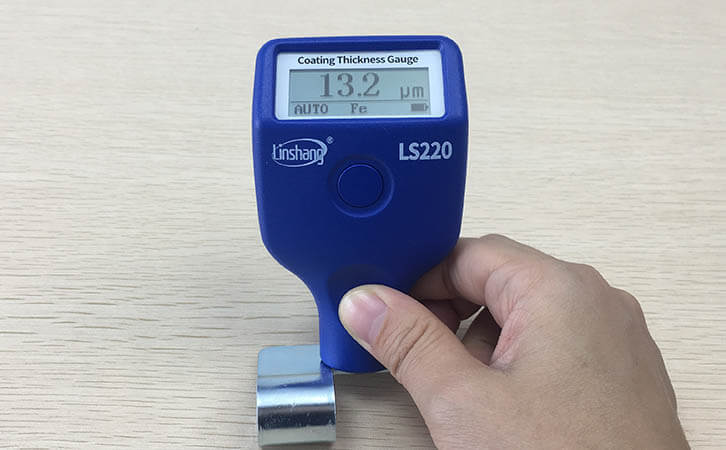Working Principle and Measuring Range of Magnetic Thickness Gauge
The magnetic thickness gauge is a non-destructive measurement of the thickness of the non-magnetic coating film on the surface of a magnetic metal substrate. This article will briefly introduce the working principle of the magnetic thickness gauge and its application measurement range.
1. What is the working principle of magnetic thickness gauge?
The measuring principle of magnetic thickness gauge is divided into magnetic suction thickness measurement and magnetic induction thickness measurement.
The thickness measurement of magnetic suction is based on the amount of suction between the permanent magnet or yoke (probe) and the ferromagnetic material, which is proportional to the distance between the two. The distance is non-ferromagnetic (including conductive and non-conductive) or with the substrate. The cladding thicknesses are sufficiently different in permeability.
At present, the magnetic thickness gauge commonly used in the market uses the principle of magnetic induction. It is based on measuring the thickness of the coating film by using the magnetic flux of the probe through the non-ferromagnetic coating to enter the ferromagnetic substrate. The thickness of the coating can also be determined by measuring the magnitude of the magnetic resistance corresponding to the threshold.
When the probe is in contact with the coating, the probe and the magnetic metal matrix constitutes a closed magnetic circuit. The magnetic resistance of the magnetic circuit changes due to the presence of the non-magnetic covering layer. The thickness of the covering layer can be calculated by measuring the change. The thicker the cladding, the greater the magnetic resistance and the smaller the magnetic flux.
2. Which products can magnetic thickness gauges be used for?
Magnetic thickness measurement can be used to measure the thickness of the non-magnetic coating on the magnetically permeable substrate. Generally, the relative permeability of the substrate is required to be above 500. If the coating material is also magnetic, the difference from the permeability of the substrate must be sufficiently large. At present, magnetic thickness gauges are often used for coating thickness detection of various products such as car paint thickness, iron-based surface rubber thickness, and enamel thickness.
The magnetic thickness gauge uses a probe with a coil around a soft core to be placed on the detected object. The instrument automatically outputs a test current or test signal. Early products used a pointer meter to measure the magnitude of the induced electromotive force. The instrument amplifies the signal and indicates Coating thickness, new instruments introduce new technologies such as frequency stabilization, phase lock, temperature compensation, etc., use magnetic resistance to modulate the measurement signal, use integrated circuits, and introduce a microprocessor to greatly improve measurement accuracy and repeatability.
The resolution of modern magnetic thickness gauge can reach 0.1μm, the allowable error can reach 1%, and the range can reach 10mm. The magnetic induction thickness gauge can be used to accurately measure the paint layer, porcelain, enamel protective layer, plastic, rubber coating, various non-ferrous metal coatings including nickel chromium, and various anticorrosive coatings in petrochemical industry.
3. How to choose a magnetic thickness gauge?
Ferromagnetic metals are very different from non-ferromagnetic metals. Therefore, special magnetic thickness gauges are used when measuring the coating thickness on ferromagnetic metal substrates, but there are currently some coating thickness gauges that can measure simultaneously two types of metal substrates, such as the coating thickness gauge LS220H, such as magnetic and non-magnetic measuring instruments have been well received in the industry for their convenience and speed.
- High precision coating thickness gauge for used car
- Automotive paint protection films coating thickness gauge
- Plating Thickness Measuring Instrument for Detecting Anti-corrosion Coating
- Linshang LS220, LS191, LS160A– Necessary for Car Cover Inspection
- Coating Thickness Gauge for Second Hand Vehicle
- Zero Adjustment Step of Coating Thickness Gauge
